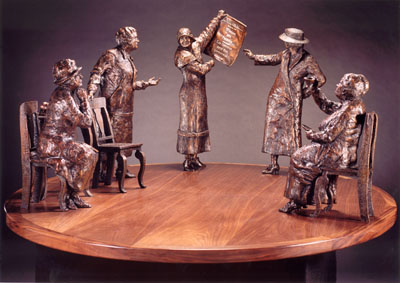Article
Estevan Coal Miners' Strike 1931
Coal miners at Bienfait, Saskatchewan, had joined the militant Mine Workers' Union of Canada in 1931. In September of that year they went on strike to win recognition of their union as a prelude to pressing demands for a restoration of wages cut by the local coal operators.







